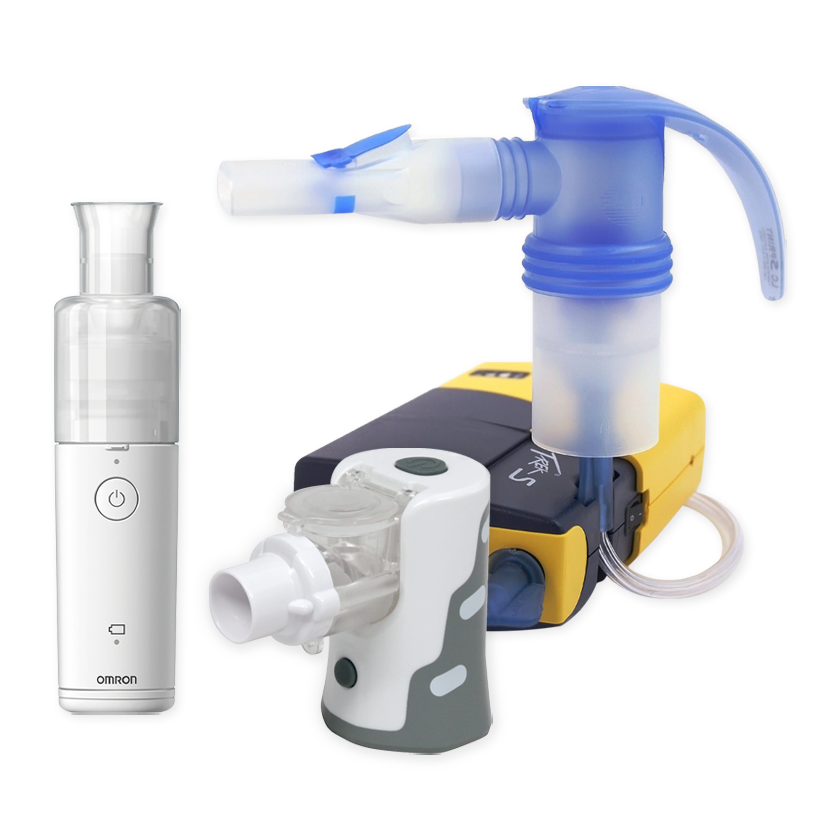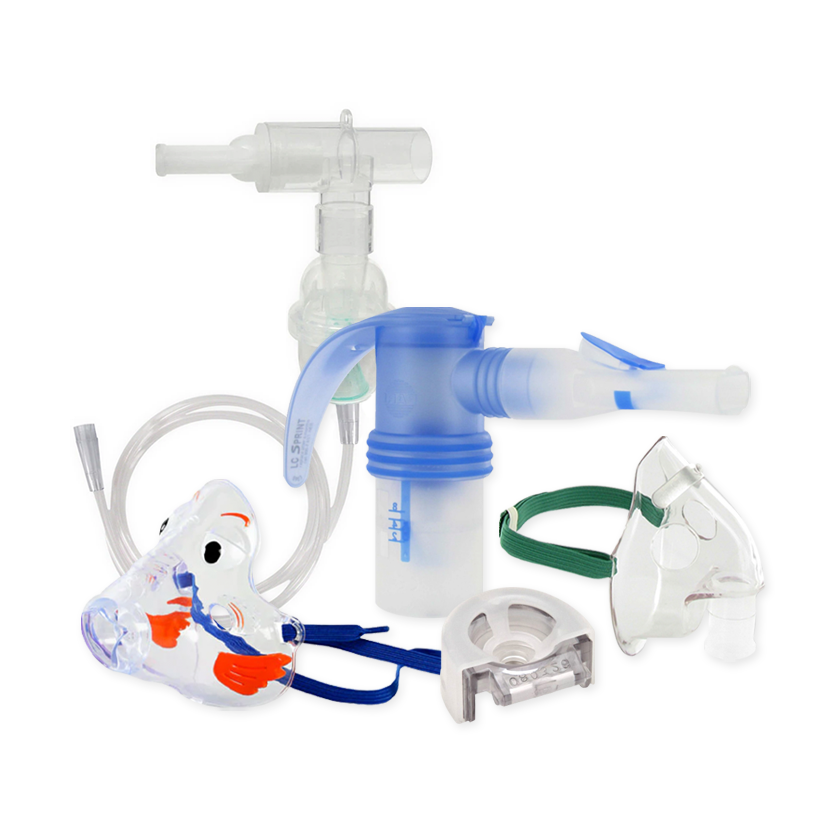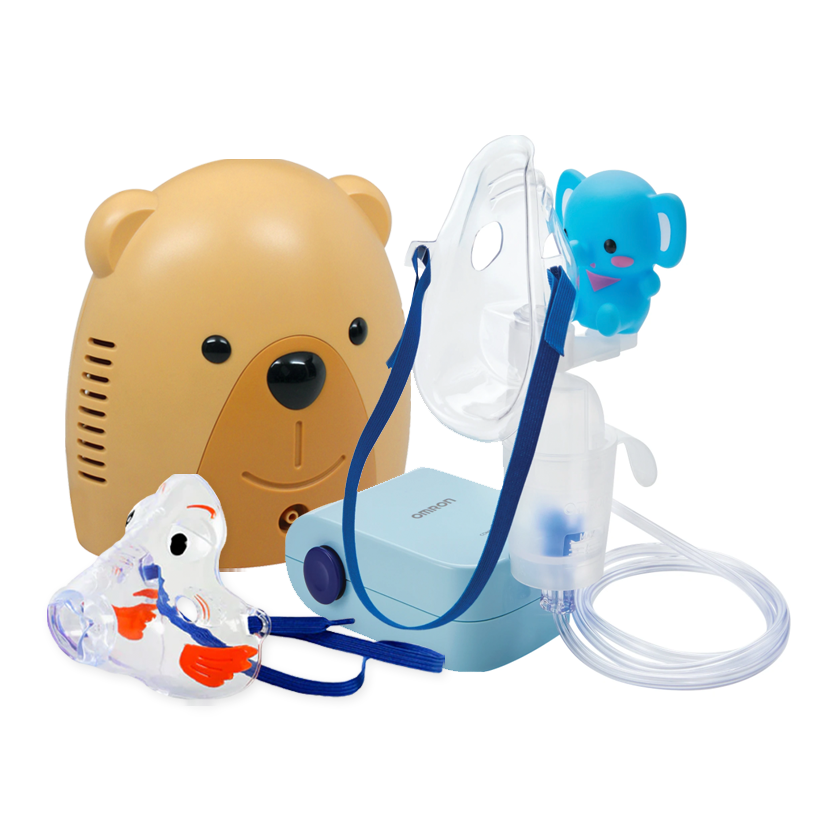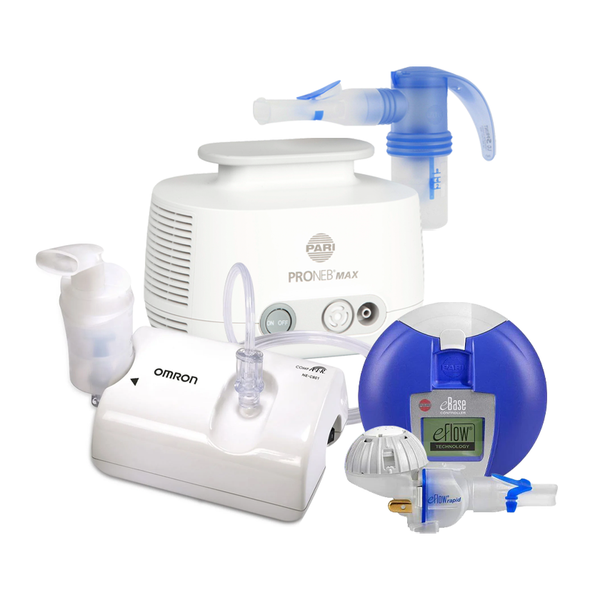Your Cart is Empty
Tips & Advice Center: Sleep Apnea and CPAP Therapy

Sleep Apnea Information >>
CPAP Basics >>
How to Prevent Rainout >>
Prescription Policy for CPAP Equipment and Insurance Information >>
CPAP Definitions & Terminology >>
Sleep Apnea Resources and Links >>

Sleep Apnea Information
WHAT IS SLEEP APNEA?
“Apnea” means “without breath” in Greek. Therefore, sleep apnea is a common and potentially dangerous sleep disorder in which an individual will repeatedly stop breathing several times throughout the night. Each pause in breathing, or “apnea”, lasts 10 seconds to several minutes, which poses for some serious health risks. The interrupted sleep schedule causes tiredness, sleepiness during the day, headaches, heart problems and more. Sleep apnea affects more than 18 million Americans, according to the National Sleep Foundation.
WHAT ARE THE DIFFERENT TYPES OF SLEEP APNEA?
There are three types of sleep apnea: obstructive, central, and mixed.
Obstructive sleep apnea (OSA): Obstructive sleep apnea (OSA), the most common type of sleep-disordered breathing, occurs when an individual’s upper throat muscles are so relaxed that it fails to keep the airway open during sleep. This causes a complete or partial blockage of airflow to the lungs, making breathing difficult. When the individual tries to breathe, any air that squeezes through the blockage can create loud snoring. Those with OSA often don’t realize that their sleep was interrupted throughout the night. Click here to view an animation on how OSA occurs.
Central sleep apnea (CSA): Central sleep apnea (CSA) occurs when you repeatedly stop breathing during sleep because your brain fails to send proper signals to the muscles that control breathing. In other words, your brain doesn’t tell you to breathe, so you don’t even try. Those with CSA often suffer from serious medical illnesses, including chronic heart failure, Parkinson’s disease, stroke, kidney failure, and brainstem damage. The symptoms of CSA include: chronic fatigue, daytime sleepiness, morning headaches, poor memory, and restlessness. Snoring is a more common symptom for OSA than CSA.
Mixed sleep apnea: This is a combination of the two types mentioned above. The condition usually starts out with CSA, and then OSA.
WHAT ARE THE SYMPTOMS OF SLEEP APNEA?
Many people with sleep apnea often don’t even realize that they have the condition. Usually, it’s the spouse or the bed partner that notices that there’s something wrong because they’ll hear loud snoring, snorting, gasps for air, or no breathing at all. For those who don’t have a sleeping partner, their condition can go undiagnosed for many years.
The symptoms of obstructive sleep apnea (OSA) and central sleep apnea (CSA) are often similar. The common symptoms of sleep apnea include:
- pauses in breathing during sleep
- loud snoring, followed by periods of silence (more prominent in those with OSA)
- excessive daytime sleepiness (hypersomnia)
- abrupt awakenings with shortness of breath
- morning headaches
- poor memory and poor concentration
- waking up with a dry mouth or sore throat
- high blood pressure
Excessive daytime sleepiness, or hypersomnia, is probably the most important symptom of sleep apnea. People with sleep apnea have the tendency to drift off into sleep, which can be dangerous especially if the person falls asleep while driving or operating machinery. Be sure to contact your doctor if you suspect that you might have sleep apnea or some other sleep-related disorder.
WHAT ARE THE RISK FACTORS FOR SLEEP APNEA?
Sleep apnea can affect anyone, but certain factors can put you more at risk:
- Obesity– Obese individuals, including children, have a higher chance of having sleep apnea.
- Large neck circumference– Those with a thicker neck (17+ inches in men and 16+ inches in women) may have a narrower airway.
- Genetics– You may be at increased risk if you have family members with sleep apnea.
- Being older- Although sleep apnea affects people of all ages, the condition is more common in adults over 60 years old.
- Being male- Compared to women, men are twice as likely to be afflicted with sleep apnea, according to Mayo Clinic. However, a woman’s risk increases if she is overweight or has gone through menopause.
- Race and ethnicity– African Americans, Pacific Islanders, and Hispanic Americans have a higher risk of sleep apnea.
- Smoking- People who smoke are three times more likely to have obstructive sleep apnea than those who’ve never smoked, according to Mayo Clinic.
- Heart disorders– People with heart conditions, such as congestive heart failure, are more likely to have central sleep apnea.
- Sedation from alcohol and medication- Alcohol and certain medications can relax the throat muscles, to the point where the airway collapses and becomes blocked.
- Neurological conditions and disorders- Medical conditions, such as stroke and brain tumors, can impair the brain’s ability to control breathing.
ARE THERE SPECIAL DOCTORS FOR SLEEP APNEA?
If you suspect you have a sleep disorder, first speak with your primary care physician. He or she will perform a physical exam, evaluate your symptoms, and determine whether or not you need to see a sleep specialist. If you have obstructive sleep apnea (OSA), your doctor may refer you to an ear, nose and throat doctor (otolaryngologist), and if you have central sleep apnea (CSA), you may be referred to a cardiologist or neurologist.
HOW IS SLEEP APNEA DIAGNOSED?
Sleep apnea is diagnosed using a polysomnogram (PSG), otherwise known as a sleep study. This can be done overnight at a sleep center lab or in your own home. During a sleep study test, specialists will place sensors onto your face, scalp, and body to record your brain and muscle activity, heart rate, blood pressure, and blood oxygen levels while you sleep. Based on the results of the PSG or home-based sleep test, a sleep specialist will determine whether you have sleep apnea and how severe it is.
HOW IS SLEEP APNEA TREATED?
The most effective treatment for moderate/severe sleep apnea is CPAP therapy. CPAP stands for continuous positive airway pressure, which means that a constant level of air pressure is delivered to the CPAP user throughout the night via the mouth and/or nose, to keep the airway open. Untreated sleep apnea can lead to high blood pressure, cardiovascular disease, memory problems, headaches, and job impairment and car accidents, due to excessive daytime sleepiness.
If CPAP therapy does not work, there are other treatment options. In mild cases of sleep apnea, symptoms can improve by losing weight, avoiding alcohol and smoking, and changing sleep positions. Some people may choose to wear an oral appliance that is designed to keep the throat open. Surgery is an option, but should be regarded as a last resort. Surgical treatments may include: tissue removal (uvulopalatopharyngoplasty, or UPPP), jaw repositioning, tonsils removal (common for children), or tracheostomy. Visit the American Sleep Apnea Association for more information on sleep apnea treatment options.

CPAP Basics
WHAT IS CPAP?
CPAP, or “continuous positive airway pressure,” is a treatment that uses mild, constant air pressure to keep the airways open during sleep. CPAP therapy is the recommended treatment for sleep apnea, in which an individual repeatedly stops breathing during sleep, either due to a blocked airway (obstructive sleep apnea, or OSA) or failed responses from the brain to breathe (central sleep apnea, or CSA).
CPAP treatment involves using a CPAP machine, a CPAP mask that attaches to the face using straps (headgear), and a hose or tube that connects the mask to the machine. Additional CPAP equipment may include nasal pillows, filters, and humidifiers.
WHAT DO CPAP SYSTEMS USUALLY COME WITH?
CPAP treatment comes with three main parts:
- CPAP machine- This is a device that provides airflow to those who have trouble breathing during sleep. CPAP machines come with a power cord and filter(s).
- CPAP mask- This fits over your nose and mouth; just your nose; just your mouth; or in your nostrils.
- CPAP hose or tubing- This is usually 6 ft. long and connects your mask to the CPAP machine.
Depending on your sleep issues, you may also need a CPAP humidifier, which adds moisture to the airflow to help reduce nasal irritation. Additional accessories and items such as chinstraps and nasal pillows are also available.
Note: At this time, Just Nebulizers does not sell CPAP machines or CPAP humidifiers.
HOW CAN CPAP TREATMENT HELP WITH MY SLEEP APNEA?
CPAP therapy provides a constant airflow to your upper airway, keeping it open so that oxygen freely flows to your lungs. Depending on your type of sleep apnea needs, the air is delivered through your mouth, nose, or both. Research shows that CPAP therapy decreases daytime sleepiness, especially in people who have moderate to severe sleep apnea. With the increase of good, quality sleep, CPAP users report feeling more energized, happier, and more alert while driving or on the job. CPAP therapy can also lower daytime and nighttime blood pressure. Additionally, sleep partners of CPAP users report getting better sleep because they aren’t disturbed by the loud snoring or gasps for air that occur in those with untreated sleep apnea.
WHAT ARE THE NEGATIVE SIDE EFFECTS OF CPAP THERAPY?
Although CPAP therapy can be life-changing, the devices can be quite cumbersome. Some people will have such a hard time getting used to wearing a mask at night that they get discouraged and give up on treatment. During the start of treatment, people may actually report sleeping less due to discomfort. Below are some of the most common complaints of CPAP therapy:
- Bloating
- Dry mouth
- Nose and throat irritation
- Nasal congestion
- Headaches
- Red marks on the face and pressure sores
- Feelings of claustrophobia
IS CPAP THERAPY RIGHT FOR ME?
This is not a simple question that we can answer, without knowing your specific conditions. If you have been diagnosed with sleep apnea, ask your doctor what treatment options are available. CPAP therapy is usually the recommended treatment for sleep apnea, but depending on your situation, you might need to participate in additional sleep studies or need surgery.
Before choosing CPAP therapy, make sure to learn the pros and cons and how the process can help you with your sleep issues. Keep in mind that getting used to sleeping with a mask on can be difficult. You will need to try on several types of masks before finding one that’s comfortable and keeps on a tight seal while you sleep. Your doctor and your DME (durable medical equipment) provider will be able to help you choose the right CPAP mask, based on your type of sleep apnea, breathing habits, facial characteristics, and sleep positions.
After you find a mask that fits you comfortably, you will need to determine the right pressure and humidity settings to set your CPAP machine at. During the first few nights, you might be tempted to take off the mask because you’re not used to wearing yet. Adjusting to CPAP therapy can take up to several months, but with all the right settings in place, you could be finally getting good, quality sleep.
WHAT ARE THE DIFFERENT TYPES OF CPAP MASKS?
CPAP masks come in different sizes and styles to accommodate various face shapes, facial hair, breathing methods (through nose or mouth), and sleep positions. Finding a CPAP mask that comfortably fits you is a matter of trial and error. Keep in mind that all CPAP masks are compatible with any CPAP machine. Read below to learn more about the different types of CPAP masks and which one best fits your sleep apnea needs:
| Type of CPAP Mask | Description | Good for Those Who... |
|---|---|---|
| Nasal Mask |
|
|
| Nasal Pillow Mask |
|
|
| Nasal Prong Mask |
|
|
| Full Face Mask |
|
|
| Total Face Mask |
|
|
| Oral CPAP Mask |
|
|
| Hybrid Mask |
|
|
HOW DO I KNOW WHICH CPAP MASK IS RIGHT FOR ME?
Aside from getting used to CPAP therapy, choosing the perfect mask can be one of the most difficult parts of treatment. You will need to try on several types of CPAP masks before finding the right one for your sleep needs. Some features to consider when selecting a CPAP mask include:
- Mask seal - Your mask should provide a good seal to maintain proper airflow. The headgear should be snug, not tight.
- Size - CPAP masks come in various sizes from petite to extra-large, so you can be rest assured that you find one that fits.
- Comfort - What good is a CPAP mask if you can’t wear it? Finding a comfortable mask is a matter of personal preference so make sure to know all your options before purchasing.
Tips on choosing a CPAP mask:
- Try on multiple masks of different sizes and styles. While lying in your usual sleeping position, test out the masks with the CPAP machine running.
- Don't choose a CPAP mask based on looks. You may look a bit strange when sleeping with a contraption on your face, but CPAP therapy could change your life for the better. In order to get the best treatment for sleep apnea and to get a good night's sleep, you need to find a mask that is comfortable and least likely to leak.
- When in doubt, choose a smaller sized CPAP mask, but make sure that it fits you comfortably. Larger CPAP masks leak more easily than smaller sizes.
WHAT ARE THE TYPES OF MACHINES USED TO TREAT SLEEP APNEA?
The type of machine you use depends on what kind of sleep apnea you have, how severe it is, and who you respond to CPAP therapy, based on your breathing methods and sleep positions. There are three main types of PAP machines:
- Continuous positive airway pressure (CPAP) - This is the standard machine used for sleep apnea treatment. CPAP therapy provides one constant level of pressure throughout night to keep the airway open.
- Bilevel positive airway pressure (BPAP, BiPAP, or VPAP) - This uses two levels of pressure: a higher pressure during inhalation and a lower pressure during exhalation. BPAP therapy is often used to treat central sleep apnea (CSA). BiPAP is the Respironics registered trademark for their bilevel machine; VPAP is the registered trademark from manufacturer ResMed.
- Auto-titrating continuous positive airway pressure (APAP or Auto CPAP) - This automatically changes pressure throughout the night. APAP therapy is best for those whose apnea worsens during different stages of sleep or different sleep positions.

How to Prevent Rainout
WHAT IS "RAINOUT"?If you use a humidifier with your CPAP machine, you might wake up several times during the night due to water in your hose and mask. This process, called “rainout”, occurs when condensation builds up in the CPAP hose, resulting in unpleasant drips and splashes onto the face.
Here are several strategies you can use to prevent rain out:
- Insulate your CPAP hose with a hose cover or fleece cozy. You can even run the hose underneath your bed covers to keep it warm. Alternatively, you may use a heated hose if your CPAP machine supports it.
- Turn the setting down on your CPAP humidifier. Keep in mind that if you turn the humidifier down too low, you may experience dry throat.
- Place your CPAP machine at a level lower than your bed height, so that the condensation will flow down to the humidifier instead of your nose.
- Raise your room temperature a few degrees and/or sleep with your windows closed.
- Use a CPAP machine with a rainout reduction feature.

Prescription Policy for CPAP Equipment and Insurance Information
DO I NEED A PRESCRIPTION?
Depending on the type of CPAP product you’re purchasing, you may need a medical prescription. Some products, such as CPAP machines, are considered Class II medical devices, therefore suppliers are required by law to obtain prescriptions before shipping orders. Below, you’ll find a list of CPAP products that may be purchased with or without a prescription.
| Prescription REQUIRED | Prescription NOT REQUIRED |
|---|---|
|
|
Note: At this time, Just Nebulizers does not carry CPAP machines, CPAP humidifiers, and CPAP machine parts.
To determine whether or not the CPAP product you wish to purchase requires a prescription, click on the Specifications tab of the product. If you have any questions, please call customer service at 1-888-550-2450.
WHAT DOES MY PRESCRIPTION NEED TO INCLUDE?
Your prescription should state the type of machine you need, whether it’s CPAP, BiPAP, etc., and the pressure at which the machine should be set at. Your physician should include your full name, his/her information and signature.
DO I NEED TO SEND A PRESCRIPTION EVERY TIME I MAKE AN ORDER?
No, once we have your prescription, it will remain on file for future orders.
HOW DO I SEND MY PRESCRIPTION?
At Just Nebulizers, we want to make it easy for you to obtain your CPAP equipment. There are four ways to send your prescription to us:
- Fax: 301-774-7982
- Email: info@justnebulizers.com
- Mail: Just Nebulizers, 11840 West Market Place, Suite H, Fulton, MD 20759
- Call: 1-888-550-2450 (Monday-Friday 8 a.m. - 6 p.m. EST). If you don't have a copy of your RX, provide us your information, and we'll request your prescription from your physician.
Note: Photos of your prescription, whether it be from a regular camera or a cellphone camera, are acceptable.
WILL MY CPAP EQUIPMENT BE COVERED BY MY INSURANCE?
This depends on your insurance policy. Contact your insurance company to find out what benefits you have in regards to your CPAP equipment.
WHAT ARE THE CODES MY INSURANCE REQUIRES WHEN I MAKE A CPAP SUPPLIES PURCHASE?
Insurance companies often require HCPCS (Healthcare Common Procedure Coding System) codes for claims related to your CPAP purchases.
| HCPCS Code | CPAP Description |
|---|---|
| E0561 | CPAP Humidifier |
| E0562 | CPAP Heated Humidifier |
| E0601 | CPAP Machine |
| A7030 | CPAP Full Face Mask |
| A7031 | CPAP Full Face Cushion |
| A7032 | CPAP Nasal Cushion |
| A7034 | CPAP Nasal Mask |
| A7035 | CPAP Headgear |
| A7036 | CPAP Chin Strap |
| A7037 | CPAP Tubing/Hose |
| A4604 | CPAP Heated Tubing |
| A7038 | CPAP Filter - disposable |
| A7039 | CPAP Filter - reusable |
| A7044 | CPAP Oral Mask |

CPAP Definitions & Terminology
Below, you'll find some of the most common terms you'll be hearing about sleep apnea and CPAP therapy:
| CPAP Term | Definition |
|---|---|
| A-FLEX | This lowers the air pressure when you exhale and then gradually increase the pressure as you inhale. A-Flex is available on auto CPAP machines only. |
| AHI - apnea-hypopnea index | This is an index used to assess the severity of sleep apnea based on the total number of apneas (pauses in breathing that last for at least 10 seconds) and hypopneas (obstructions of breathing) occurring per hour of sleep. An AHI of less than 5 is classified as normal; 5 to 15 is mild obstructive sleep apnea, or OSA; 15 to 30 is moderate OSA; and 30+ is severe OSA. |
| APAP - auto positive airway pressure | This is a machine that automatically adjusts the air pressure taken in by the patient. |
| Apnea | In Greek, apnea means "without breath." |
| BiPAP - bilevel positive airway pressure | Unlike a CPAP machine, which provides a steady level of pressure, a BiPAP machine uses two alternating levels of pressure. |
| C-FLEX | This lowers the air pressure as you exhale, and then returns to the prescribed pressure just before inhalation. This pressure relief feature was developed by manufacturer Respironics. |
| CPAP - continuous positive airway pressure | This is the most effective treatment for sleep apnea. CPAP therapy provides one constant air pressure to help keep the airway open. |
| CSA - central sleep apnea | This is when a person forgets to breathe during sleep because their brain fails to send signals to the muscles that control breathing. |
| DME - durable medical equipment | This is the term used to describe home medical equipment that helps improve the quality of daily living. DMEs, like CPAP equipment, may be covered by insurance and Medicare. |
| EPR - expiratory pressure relief | Like C-Flex, EPR provides pressure reduction for easier exhaling. This term is coined by manufacturer ResMed. |
| Hypopnea | This is a sleep disorder that involves a reduction of airflow that lasts for at least 10 seconds, shallow breathing, or an abnormally low respiratory rate. |
| Mouth breathing | As the name suggests, mouth breathers breathe through their mouth. These individuals may prefer a full face CPAP mask or oral mask over a nasal CPAP mask. |
| Nasal pillow | This is a type of CPAP mask that consists of cushioned discs that are inserted into the nostrils or around the nose. Nasal pillows are ideal for those who are claustrophobic, have facial hair, or want a clear field of vision at night. |
| OSA - obstructive sleep apnea | This occurs when a person repeatedly stops breathing during sleep due to a blocked or collapsed airway. Obstructive sleep apnea is the most common type of sleep apnea. |
| Rain out | If you use a humidifier with your CPAP machine, you might wake up several times during the night due to water in your hose and mask. This process, called “rainout”, occurs when condensation. |
| Ramp | The ramp function on a CPAP or BiPAP machine gradually increases the pressure until it reaches the prescribed pressure. |
| Sleep apnea | Apnea means “without breath” in Greek. Therefore, sleep apnea is when a person repeatedly stops breathing while sleeping. |
| Smartflex | Similar to Respironics C-Flex and ResMed EPR, SmartFlex provides exhalation pressure relief. SmartFlex is trademarked by manufacturer DeVilbiss. |
| Titration | A titration study determines the proper settings for CPAP therapy. Based on the results, the sleep specialist will decide what type of CPAP mask works best for the patient and what air pressure the machine should be set at. |

Sleep Apnea Resources and Links
Associations and Foundations
- American Sleep Apnea Assocation (ASAA)
- Centers for Disease Control and Prevention (CDC) - Sleep and Sleep Disorders
- Mayo Clinic - Sleep Apnea
- MedlinePlus - Sleep Apnea
- National Heart, Lung, and Blood Institute (NIHLBI) - CPAP
- National Sleep Foundation
- Sleep Education - American Academy of Sleep Medicine
CPAP Forums and Support Groups
- American Sleep Apnea Association - Apnea Support Forum
- Apnea Board
- CPAP.co.uk. - Sleep Apnea - Snoring
- Yahoo! Groups - cpapusers - A forum about sleep apnea, CPAP & BiPAP
CPAP Manufacturers
- Drive Medical
- Fisher & Paykel Healthcare
- Invacare Supply Group
- MABIS Healthcare
- Philips Respironics
- ResMed





